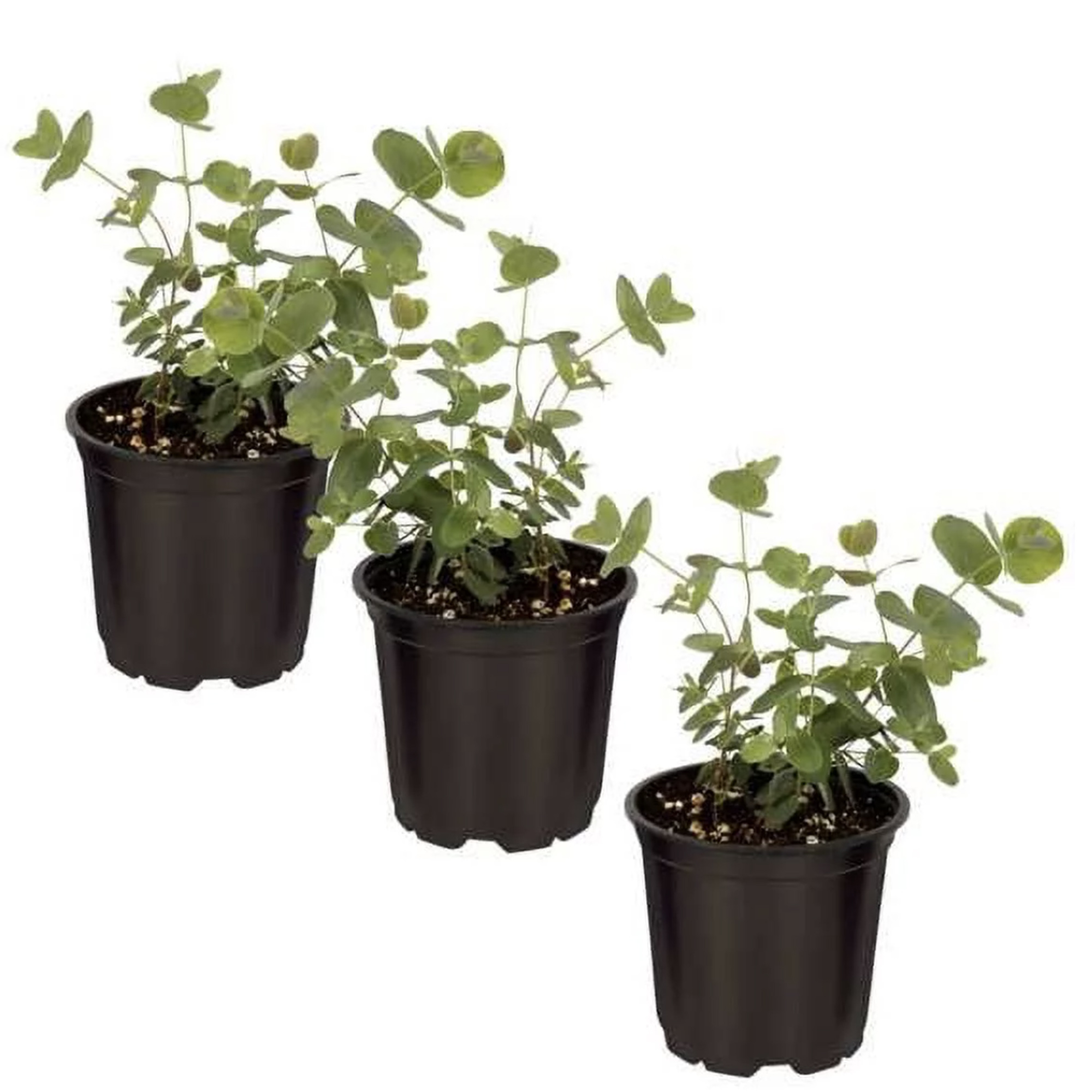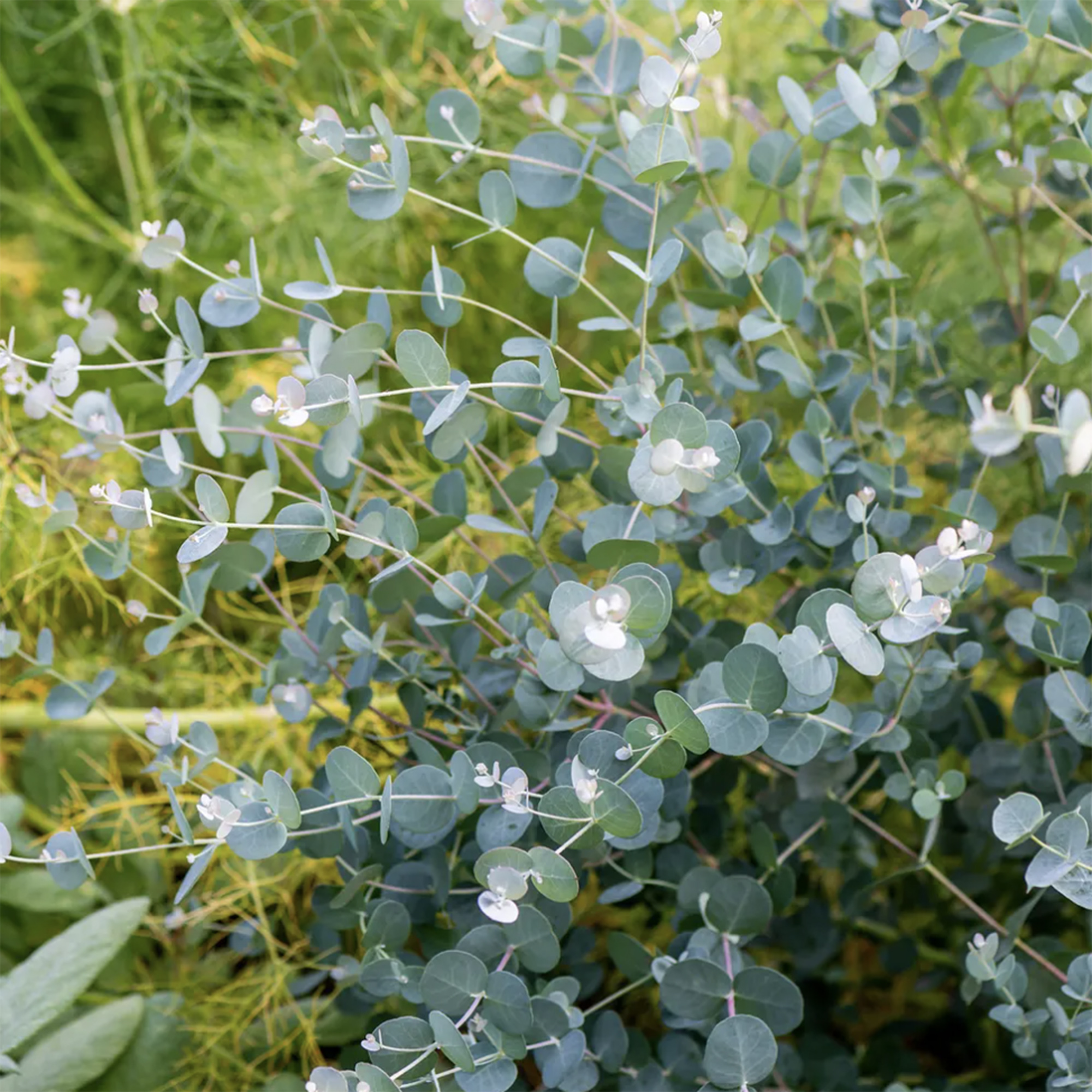Eucalyptus care and growing guide – how to look after these popular backyard trees
Learn how to grow an elegant and evergreen eucalyptus in your garden
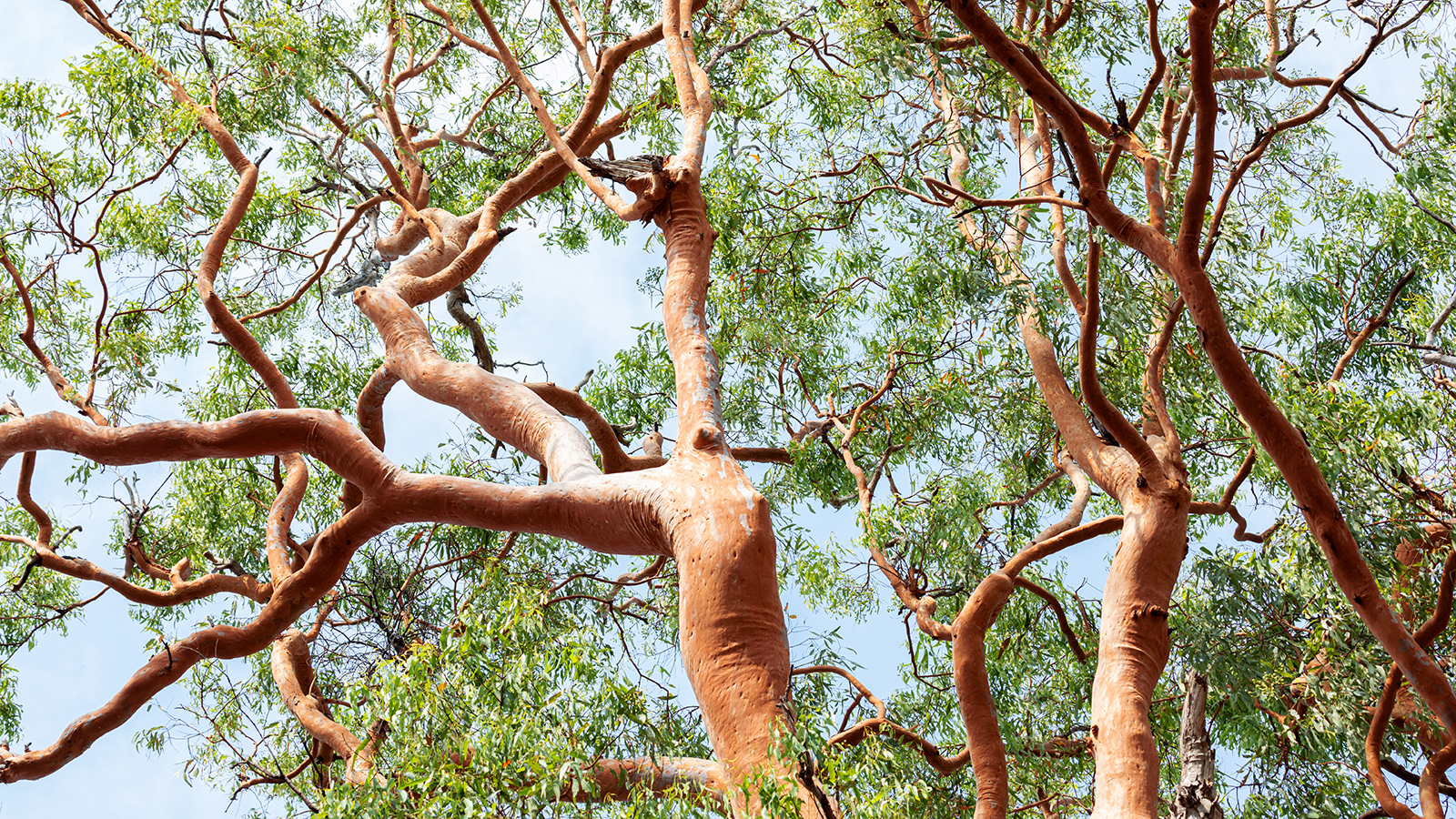

Eucalyptus trees, otherwise known as gum trees, are admired for their colorful peeling bark and gray-green or blue-green foliage that's wonderfully aromatic. These aesthetic attributes make them a top choice for contemporary planting schemes where they fit right in alongside grasses, succulents and palms. They blend well with more traditional landscapes, too.
They’re native to Australia but are becoming one of the most widely-planted trees across the world. But, as many eucalypti are fast-growing trees and get very large – are they suitable for the average backyard?
According to Hardy Eucalyptus, an award-winning specialist eucalyptus nursery, it’s a myth that eucalypti are unsuitable garden trees: 'eucalyptus is a profoundly misunderstood genus.
'The 700 or eucalyptus species exhibit a staggering range of shapes and sizes, and the important thing is to choose a species that’s right for your particular growing environment,' they explain.
Yes, some varieties get super tall – at 328ft Eucalyptus regnans is the tallest flowering plant on earth! But, many eucalyptus varieties have an eventual height and spread of 32ft which is perfect for smaller plots and even for growing in containers. If a 32ft tree still sounds too big for your backyard, rest assured that careful pruning each spring will help keep the tree’s size in check, as will the horticultural technique of pollarding – more on this later.
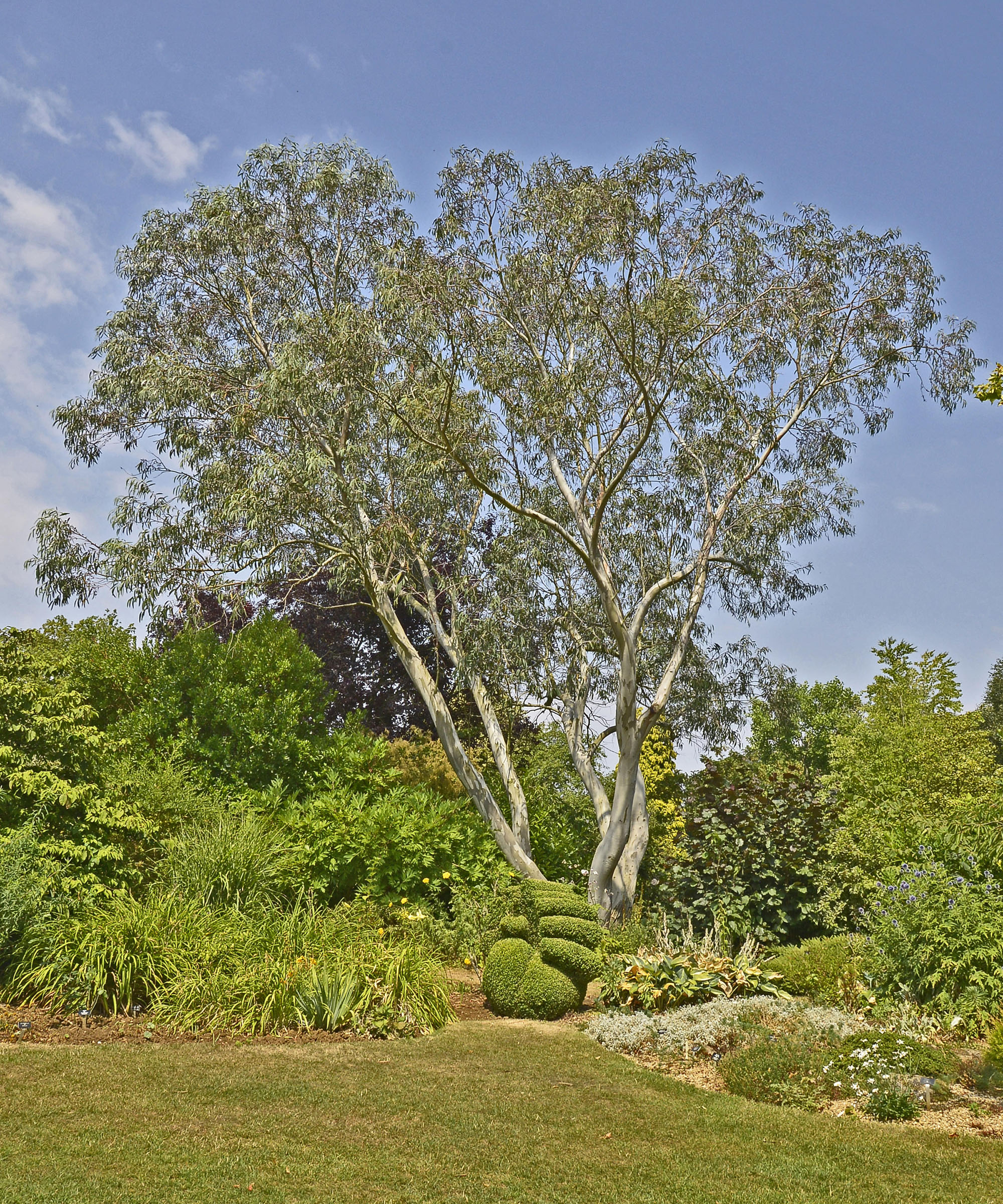
The hardy Eucalyptus pauciflora niphophila 'Snow Gum' makes an impressive statement in this backyard
Eucalyptus key facts:
- Plant type: Evergreen trees or shrubs
- Mature size: Varies. Some can grow very large
- Soil type: Most soil types, well-drained
- Soil pH: Neutral to slightly acidic
- Time of year to plant: Spring and early fall
- Flowering time of year: Various times, depending on the species
- Flower color: Small white or cream pom poms
- Hardiness zones: USDA zones 8-11
- Scientific name: Eucalyptus
- Common name: Gum tree
Types of eucalyptus
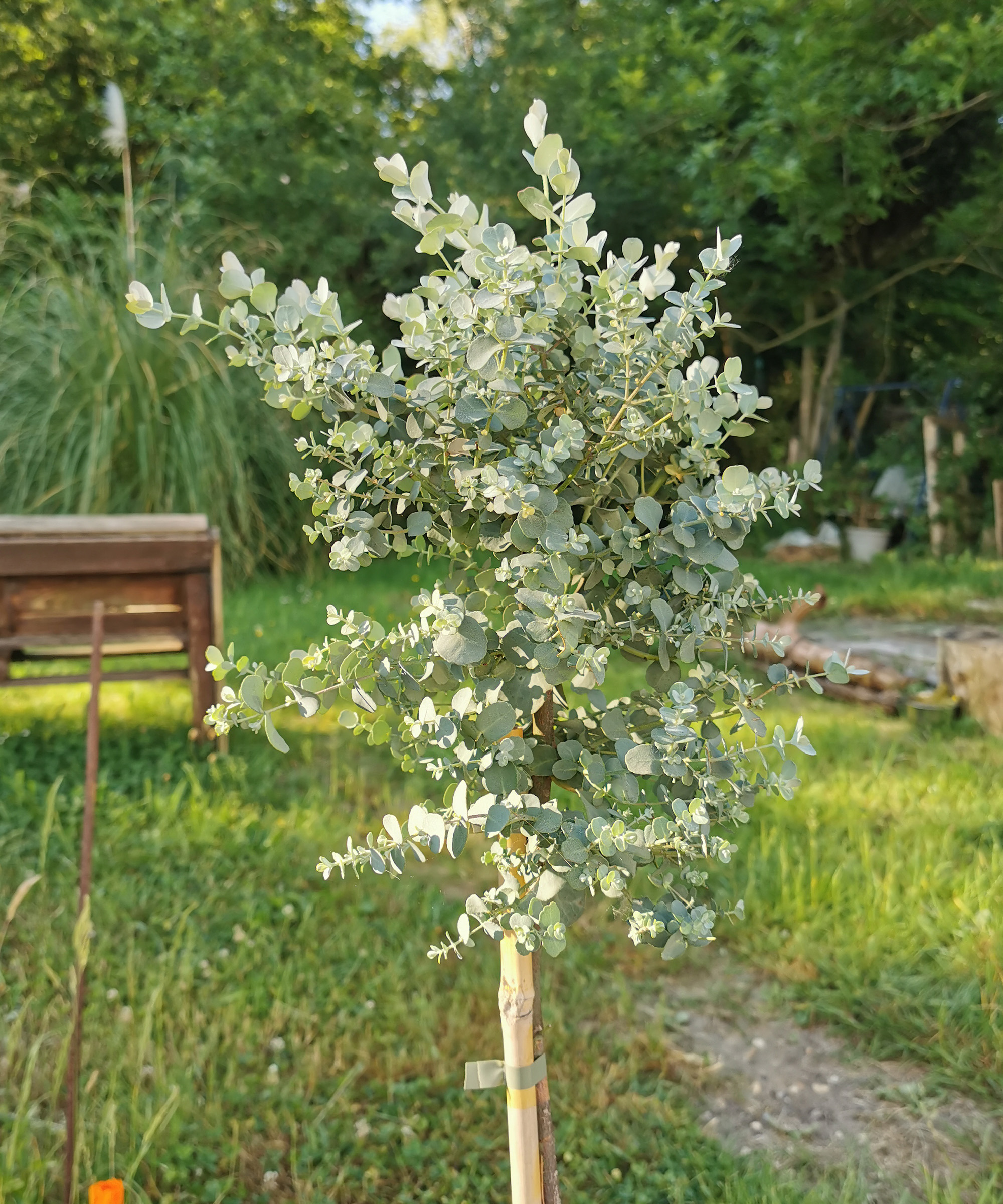
The attractive foliage of cider gums is commonly used in flower displays
The most commonly sold species of eucalyptus is the cider gum (E. gunnii). While this is a beautiful tree, and one that’s popular with commercial cut foliage growers, it can reach 98ft depending on its age and growing environment.
It’s often sold to unassuming customers as a tree that will only reach 32ft, and it’s probably this species that has given eucalyptus a bad rep over time. The cider gum is definitely not a tree for small gardens, but it can be pollarded and there are dwarf cultivars of E. gunnii becoming more widely available.
A reputable plant nursery will be able to suggest the best species for your backyard. Hardy Eucalyptus recommends dwarf cider gum varieties like ‘France Bleu’, ‘Azura’ and ‘Silverana’. These are all slow-growing with a compact bushy habit that's perfect for creating a hedge for privacy.
Southern Eucs nursery in Georgia offers Eucalyptus moorei ‘Skinny Minny’ as its smallest variety. It could reach 12ft eventually, but 'is easy to control and responds well to pruning.'
Shop eucalyptus trees
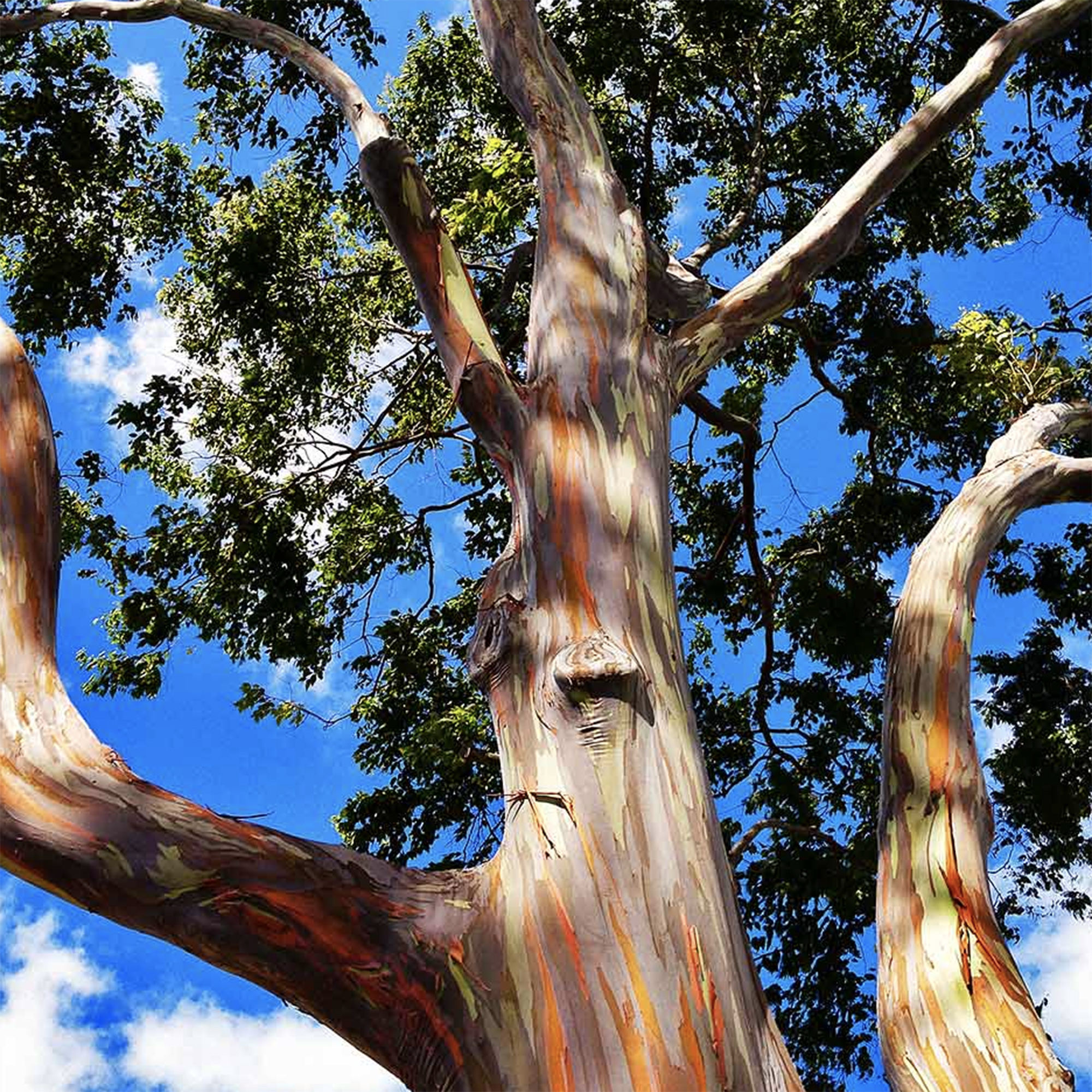
A really beautiful and statement tree unlike any other. Over time its bark peels away to reveal rainbow-like stripes of color on the trunk and branches.
How to use eucalyptus in your yard
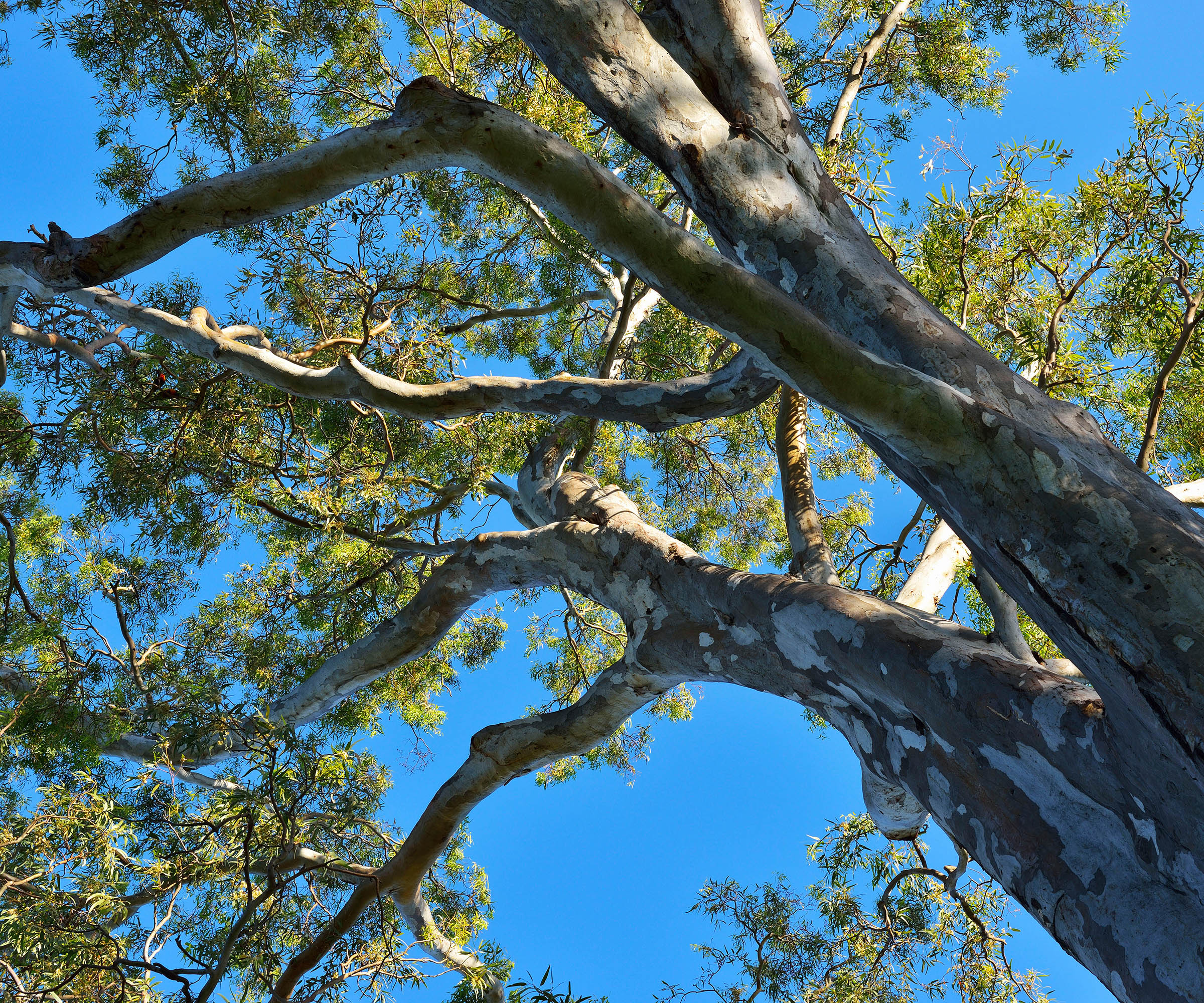
Eucalyptus trees can grow fast and tall
If you’re wondering whether you can grow eucalyptus as a backyard tree, or tree for a front yard, the answer is probably yes – but you first need to think about three factors: how much space you have, what are your growing conditions, and what USDA climate zone you are in.
Hilary Collins says, 'ideally, the height of your eucalyptus (and indeed any tree) should be the same distance away from the house.'
A tree’s root system is usually a mirror of the tree’s canopy, so it’s sensible to plant a tree the same distance from the foundations of buildings.

Hilary has a degree in horticulture and has spent her career growing a wide range of plants. She now grows eucalyptus trees on a commercial scale.
When to plant eucalyptus
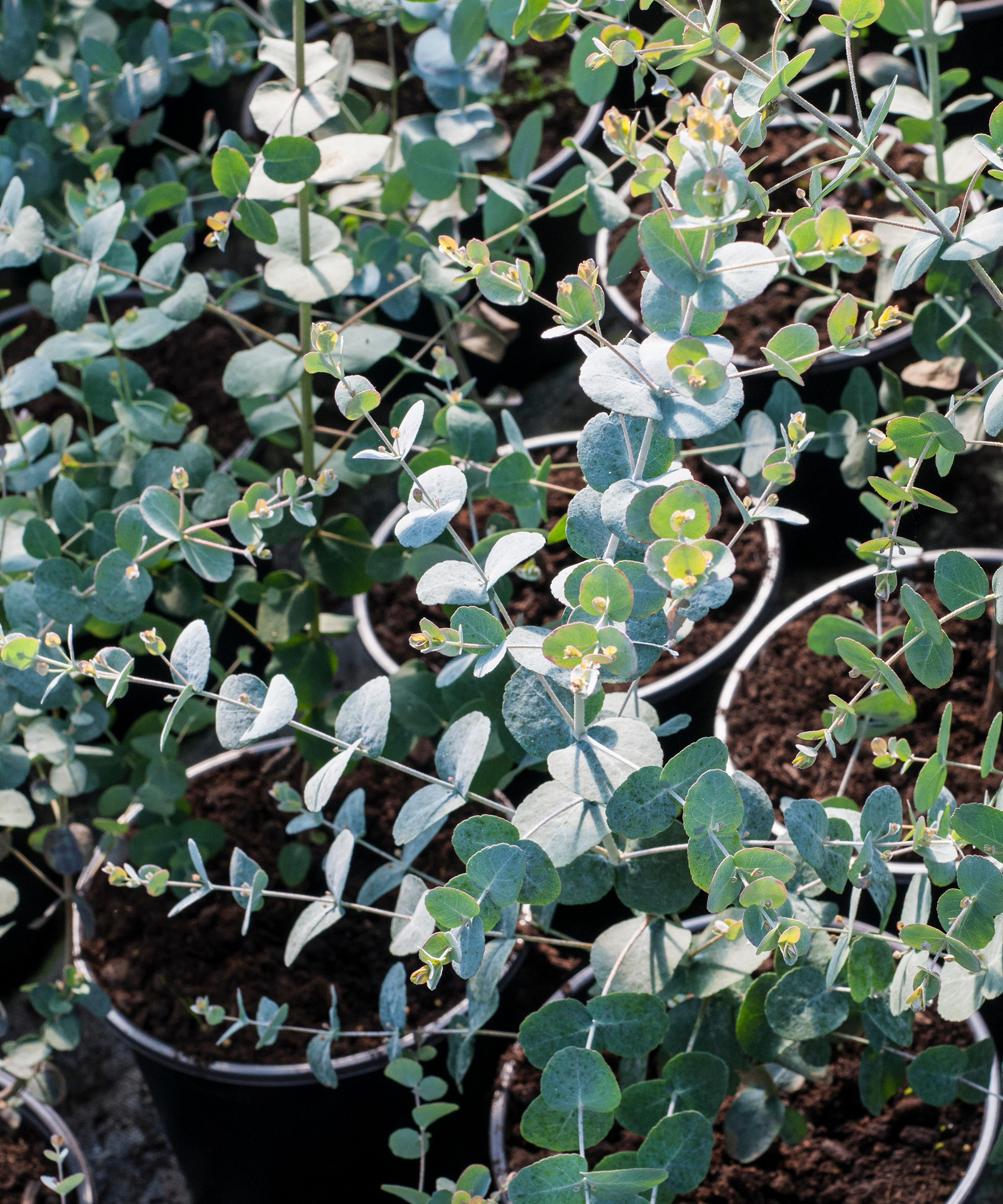
Mulch your young eucalyptus plant to protect it from winter cold
There are a couple of options for when to plant trees. The optimum time to plant a eucalyptus is spring through to midsummer, so it has plenty of time to get established before the winter. If you need to plant this evergreen tree in summer, ensure you keep on top of watering, particularly if there are prolonged periods of drought.
Where to plant eucalyptus
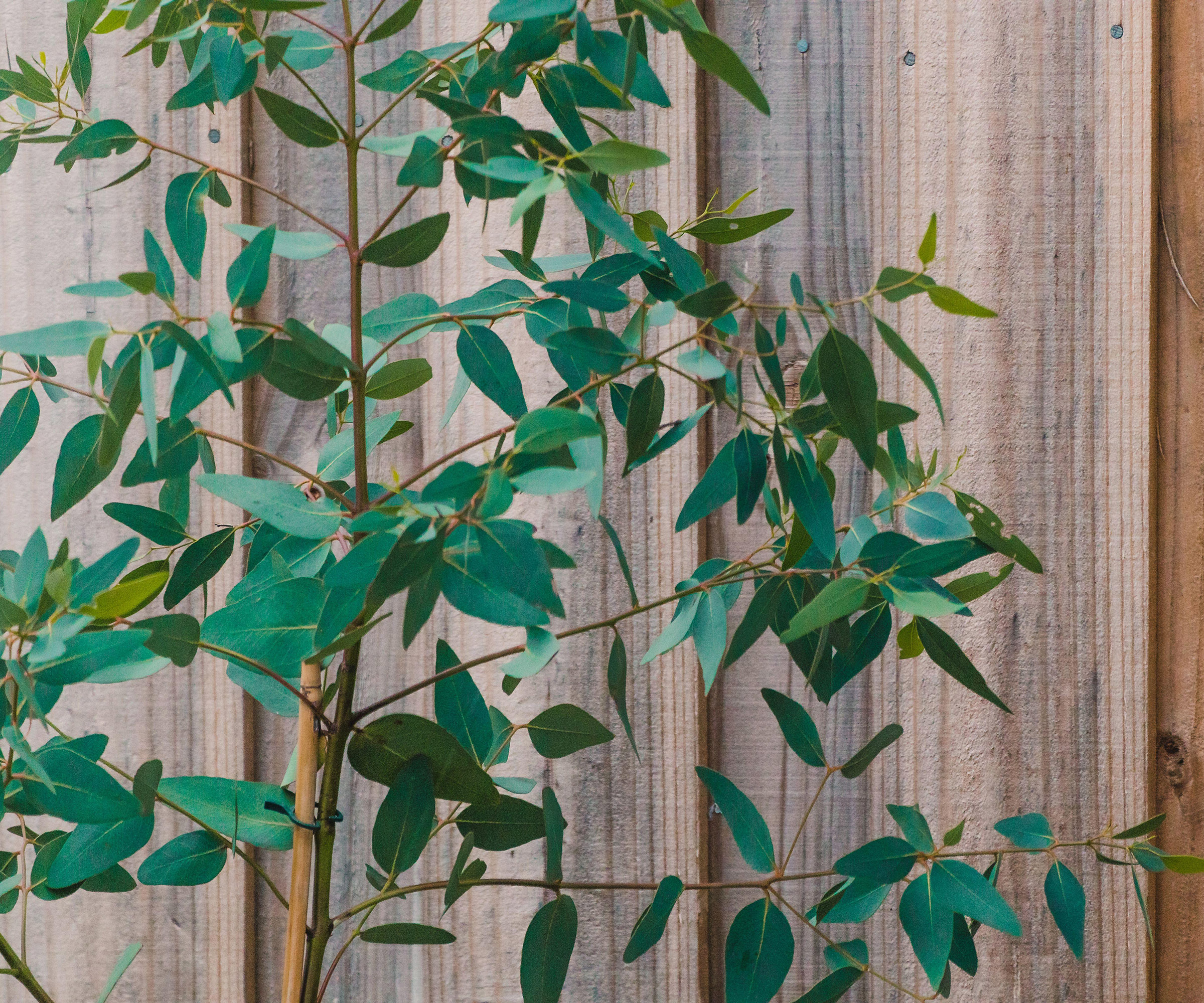
Most eucalypti prefer free-draining soil. If yours is heavy clay, improve the area where the tree is to be planted by digging in loam topsoil and sharp sand.
If you already have free-draining soil, anything in the snow gum family will thrive, while E. subcrenulata is a great choice of tree for clay soils that are poorly drained. Swamp gums, like E. aggregata, tolerate boggy, wet conditions, but they grow very tall.
How to plant eucalyptus
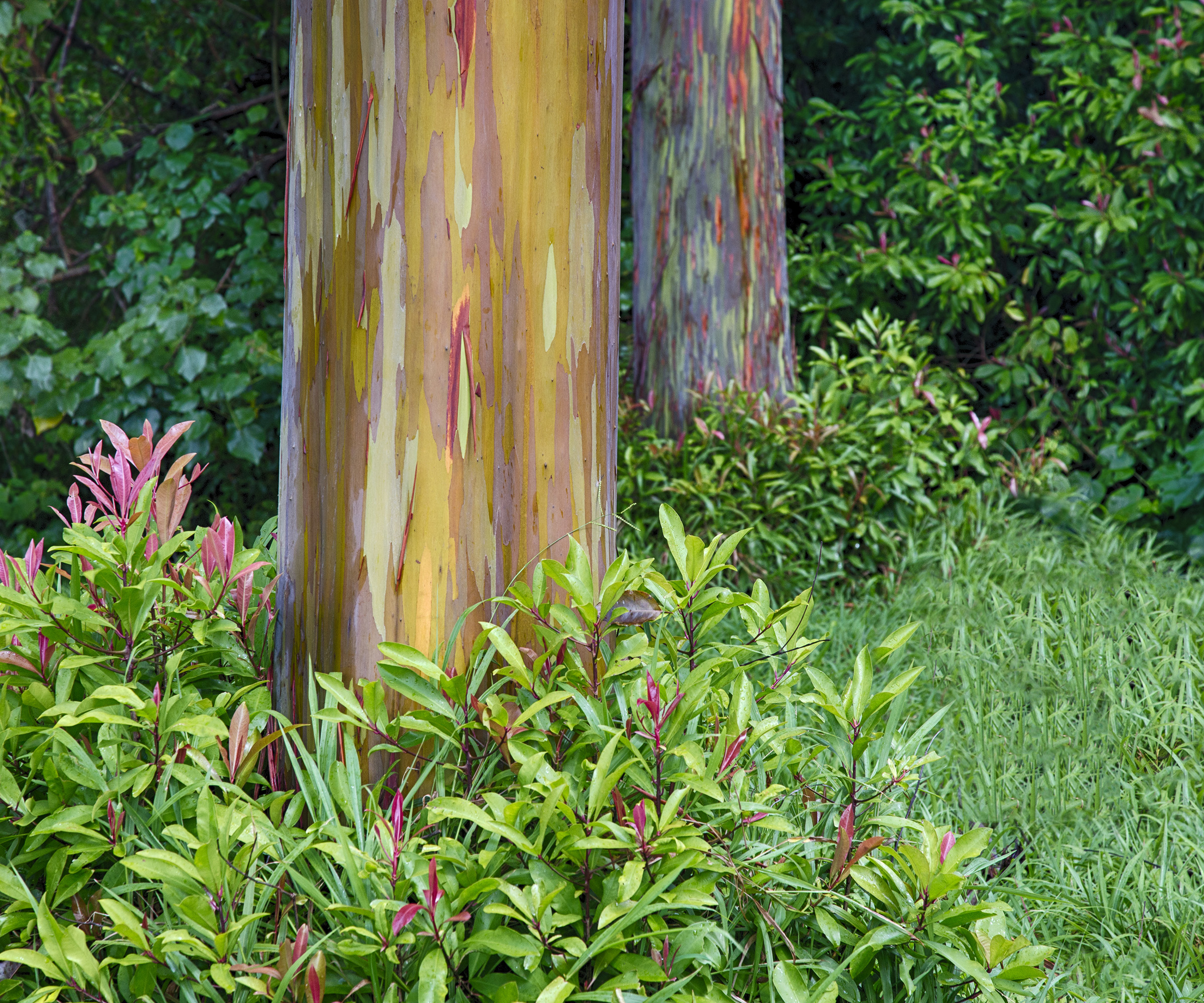
The rainbow eucalyptus tree has attractive, colorful bark
When it comes to planting, dig a hole three times the width and depth of the container, swapping any hard subsoil for sandy loam. 'Sandy loam makes it easier for the rootball to establish,' says Hilary Collins.
'Cover the rootball with mycorrhizal fungi and don’t use compost or horse manure in the planting hole, only in the surrounding soil,' she adds.
The top of the rootball should be buried between half an inch and an inch below soil level – which is contrary to the usual advice for woody plants – but this is so the lignotuber is protected in very cold weather.
The lignotuber is a woody swelling at the part of the tree where the trunk or stem meets the root system, usually at soil level. It’s part of the tree’s defense system and where new shoots sprout from when the main trunk is damaged – for instance, by fire, excessive grazing by an animal, or a very hard winter.
In cold regions, give the root zone a ‘root duvet’ – a 4in deep mulch of bark chippings or organic straw to protect the roots from freezing over winter. When applying, be sure to keep the mulch away from the trunk.
Water eucalyptus in well during the first couple of years, particularly during prolonged periods of drought. Apply a quality fertilizer each spring to young trees that are still establishing and to those that have just been hard-pruned. Established trees do not usually need fertilizing.
How to pollard or coppice a eucalyptus
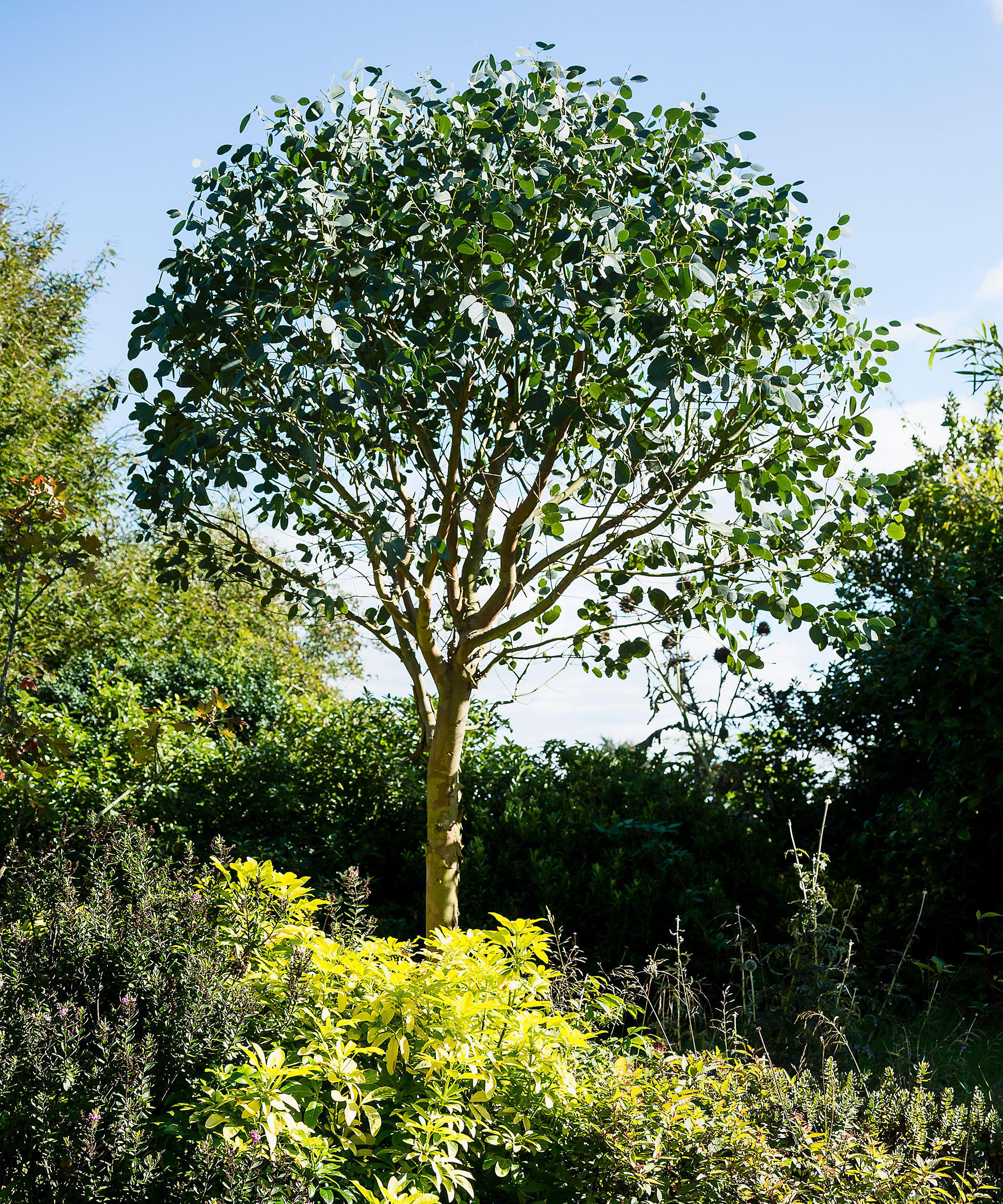
This Eucalyptus gunnii has been pruned to fit in with its surroundings
Knowing when and how to prune a eucalyptus is vital to maintaining this fast-growing tree. But pollarding is another option to consider.
Pollarding is a horticultural technique where you chop off the tree cleanly to 3-4ft from the soil. Coppicing is where the plant is cut right back to 4in from the soil.
Although both sound brutal, they're a great way to keep a tree’s size in check and will also provide you with armfuls of beautiful fragrant foliage – great if you’re into flower arranging or know someone who is. A pollarded tree or a ‘shrub-on-stick’ can be a thing of beauty, an architectural feature or focal point in its own right, while regular coppicing is a great way to use trees for privacy and create a low garden screen or hedge.
These techniques are best done very early in the growing season when the first shoots are appearing and the long-range weather forecast says we aren’t going to get a return to winter. Treat the pruning cuts with wound paint to prevent fungal disease.
Pollarding removes a lot of energy so you need to feed and water the tree well afterward, otherwise there’s a risk it will become exhausted and die.
Choose a vigorous variety that will bounce back into growth after some serious pruning. E. perriniana, E. parvula, E. archeri, and E. subcrenulata are all varieties that can take a hard pruning, according to Hilary. 'Only start pollarding when trunks are 2in in diameter,' she says.
FAQs
How long does it take to grow eucalyptus?
Some eucalypti are very fast-growing trees, putting on over 3ft of growth each year. The general rule of thumb is, the species that grow fast from the get-go are the ones that will reach sky-scraper height eventually. The ones that are naturally slow-growers initially, then speed up, won’t ever get too large.
Eucalyptus are shallow-rooted (just like birch and mountain ash), so good root establishment is important, particularly with the taller growing species.
Hillary Collins at Hardy Eucalyptus recommends buying specimens that have been grown in ‘air root’ pots and not smooth-walled pots: the latter promote root circling, which eucalyptus are prone to. Air root pots produce a safe and stable radial root system. This will prevent trees that grow more than 32ft from leaning or toppling.
How to make more eucalyptus?
A eucalyptus is notoriously difficult to propagate from cuttings and home gardeners should only attempt to grow it from seed.
Hilary Collins of Hardy Eucalyptus says 'vegetative propagation is very difficult; the cuttings don’t root easily and there’s no lignotuber.'
Getting free seeds takes just five steps:
- Collect seeds ripe when the capsules on the tree split easily. They can take a year or more to ripen on the tree.
- Put the seed of hardy species in a fridge for two to three months.
- Sow the seeds in late winter into deep pots or modules such as root trainers.
- Use a heated propagator if possible to encourage successful germination.
- Plant the seedlings into their permanent position by mid-summer.
Can eucalyptus be underplanted?
Yes, when it comes to eucalyptus you can plant under trees. In fact, you’ll see many professionally-maintained gardens that have their eucalyptus trees underplanted.
The trick is to underplant at the time you plant the eucalyptus, while the soil is nicely workable around the tree. Aim to plant a minimum of 3ft from the trunk. The soft landscaping under trees you choose will need to match your soil type and climate and be tolerant of part shade, unless you're planting on the sunnier side of the tree.
If planting near a lawn, it’s important to stop grass growing around the base of the tree or it will affect the growth of the eucalyptus.
Eucalyptus trees will add real drama to your backyard. But they can also work well as indoor trees, to bring lush foliage to a bright living room.
For an unusual species, see our feature on rainbow eucalyptus trees, for an otherworldly tree with multicolored bark.
Sign up to the Homes & Gardens newsletter
Design expertise in your inbox – from inspiring decorating ideas and beautiful celebrity homes to practical gardening advice and shopping round-ups.

Sally is horticulturally trained to degree level and has worked on gardening magazines for over a decade. She now regularly writes for Homes & Gardens and Easy Gardens. When Sally isn’t writing, she gardens for local clients, and cultivates her own little patch in sunny Bournemouth.
-
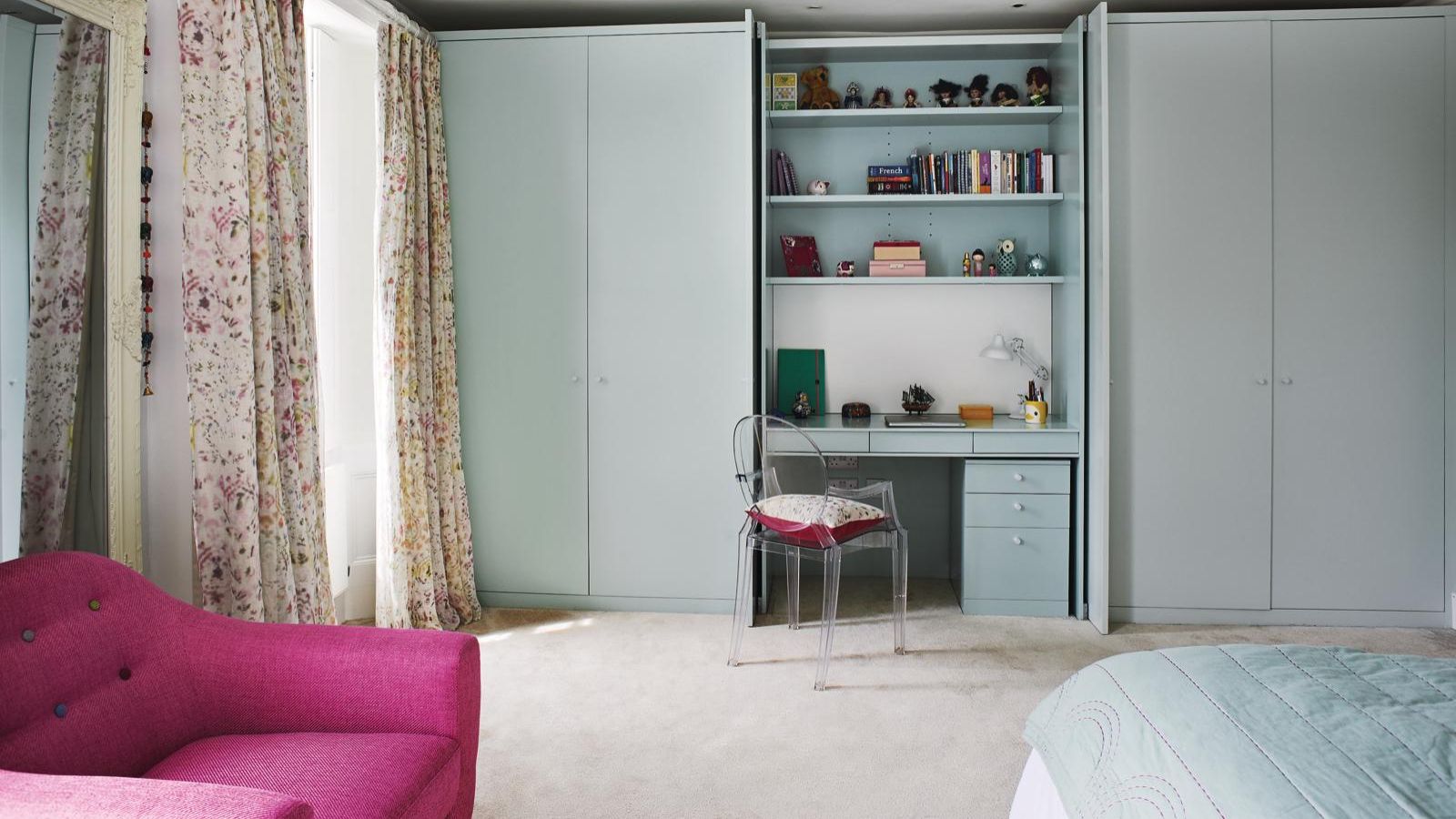 I always get my small space storage from Wayfair – and these discounted $35 stackable Martha Stewart storage boxes are the perfect fix for my tiny vanity
I always get my small space storage from Wayfair – and these discounted $35 stackable Martha Stewart storage boxes are the perfect fix for my tiny vanityI'm going vertical for tiny space storage success with this Early Way Day 2025 bargain
By Punteha van Terheyden
-
 These are the colors that just don't work with purple – 4 shades to sheer clear of if you want to bring this on trend color into your home
These are the colors that just don't work with purple – 4 shades to sheer clear of if you want to bring this on trend color into your homeWhy some colors sabotage purple, and how to get it right every time.
By Sophia Pouget de St Victor
